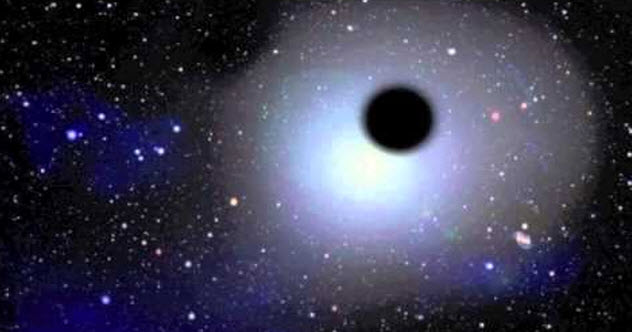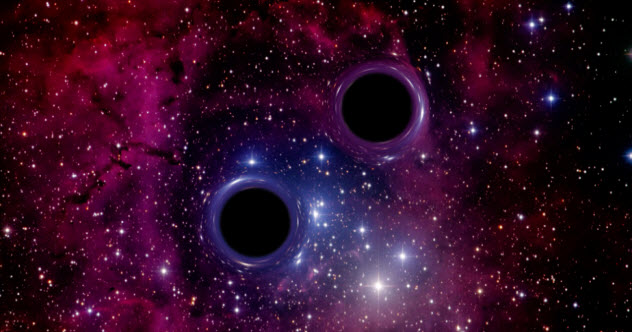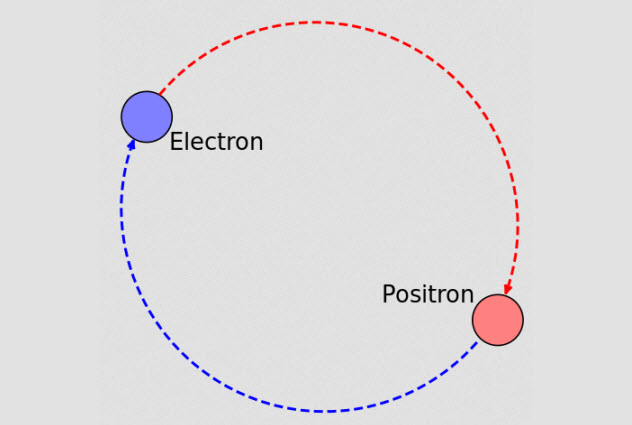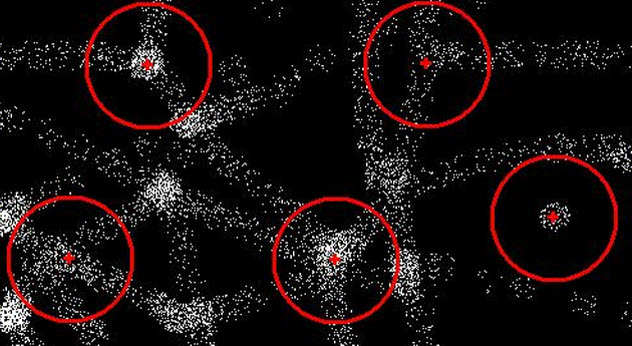 Weird Stuff
Weird Stuff  Weird Stuff
Weird Stuff  Our World
Our World 10 Ways Your Christmas Tree Is More Lit Than You Think
 Movies and TV
Movies and TV The 10 Coolest Stars to Set Sail on The Love Boat
 History
History 10 Things You Didn’t Know About the American National Anthem
 Technology
Technology Top 10 Everyday Tech Buzzwords That Hide a Darker Past
 Humans
Humans 10 Everyday Human Behaviors That Are Actually Survival Instincts
 Animals
Animals 10 Animals That Humiliated and Harmed Historical Leaders
 History
History 10 Most Influential Protests in Modern History
 Creepy
Creepy 10 More Representations of Death from Myth, Legend, and Folktale
 Technology
Technology 10 Scientific Breakthroughs of 2025 That’ll Change Everything
 Weird Stuff
Weird Stuff Ten Bizarre Facts About The Doge Meme
 Our World
Our World 10 Ways Your Christmas Tree Is More Lit Than You Think
 Movies and TV
Movies and TV The 10 Coolest Stars to Set Sail on The Love Boat
Who's Behind Listverse?

Jamie Frater
Head Editor
Jamie founded Listverse due to an insatiable desire to share fascinating, obscure, and bizarre facts. He has been a guest speaker on numerous national radio and television stations and is a five time published author.
More About Us History
History 10 Things You Didn’t Know About the American National Anthem
 Technology
Technology Top 10 Everyday Tech Buzzwords That Hide a Darker Past
 Humans
Humans 10 Everyday Human Behaviors That Are Actually Survival Instincts
 Animals
Animals 10 Animals That Humiliated and Harmed Historical Leaders
 History
History 10 Most Influential Protests in Modern History
 Creepy
Creepy 10 More Representations of Death from Myth, Legend, and Folktale
 Technology
Technology 10 Scientific Breakthroughs of 2025 That’ll Change Everything
10 Bizarre Realities Of Life At The End Of The Universe
Our universe is going to die, no doubt about it. One of the most accepted models of the end of the universe is eternal expansion and eventual death by entropy. As the universe continues to expand, entropy increases until everything we know is gone. But what does life look like as the end approaches? That question has given rise to fascinating ideas about the universe and life itself.
10 No Stars Visible From Earth

In 150 billion years, the night sky from Earth will look very different. As the universe races to its heat death, space itself will start to expand faster than the speed of light. Many of us are aware of the idea that light speed is a hard limit on the speed of an object in the universe. However, that only applies to objects that are in space, not the fabric of space-time itself. This is a hard concept to wrap our minds around, but the fabric of space-time is already expanding faster than light. And in the far future, it will have strange implications.
As space itself is expanding faster than light, a cosmological horizon exists. Any object past the horizon would require us to have the ability to observe and record by detecting particles traveling faster than light. But no such particle exists. Once objects pass beyond our cosmological horizon, they are inaccessible to us. Any attempt to contact or interact with distant galaxies past the horizon requires us to have technology capable of traveling faster than the expansion of space itself. Right now, only a few objects are outside of our cosmological horizon. But as dark energy accelerates the expansion, everything will fall beyond this observational limit.
What does that mean for Earth? Imagine looking up at the night sky in 150 billion years. The only things visible will be a few scattered stars that are within the cosmological horizon. Eventually, even those will go away. The night sky will go completely blank. An astronomer in the future will have no proof that there is any other object in the universe. All the stars and galaxies we see now will be completely out of telescope reach. For all we could see, our solar system would be the only thing left in our universe.
9 Our Sun Becomes A Black Dwarf

Right now, our universe has many different types of stars. Red dwarfs—cool stars that give off red light—are among the most common of these. Semantically related white dwarfs also fill the universe. These are stellar remnants of dead stars, made of degenerate matter, that are held together by quantum effects. Currently, astronomers consider white dwarfs to have essentially infinite life spans. The universe is just not old enough for them to have died out. But given enough time, even they will die and become exotic stars named black dwarfs.
Our Sun is on that path. In the distant future, our Sun will eject its outer layers and turn into a white dwarf star, staying in that state for billions of years. As the universe winds down, the white dwarf that was our Sun will start to cool. After 10100 years, it will cool down until its temperature is equal to the background microwave radiation, just a few degrees Kelvin above absolute zero.
When that happens, it will be a black dwarf. As this type of star is so cold, it is invisible to the human eye. Thus, anybody trying to find the Sun that used to give us life will find it impossible to see with optical systems. Instead, they will have to rely on detecting its gravitational effects. Most stars that we see in the night sky will become black dwarfs, but knowing that our warm Sun will devolve into a dark and cold stellar remnant is a little more personal.
8 Weird Stars
By the time our Sun becomes a black dwarf, stellar evolution will be over. No new stars will form. Instead, the universe will fill up with cold remnants of the stars. That will allow the universe to start developing some odd stars that are quite different from what we know.
One is the frozen star. As the stars of the universe burn through their nuclear fuel, they will increase their metallicity. In astronomy, this is the measure of elements in a star that are heavier than helium—basically all the elements from lithium on. As the metallicity of the stars increase, they will get colder because heavier elements give off less energy from fusion. Eventually, stars will get so cold that they will have a temperature of 273 Kelvin, the freezing point for water.
Jumping ahead to the far distant future, an even weirder star will emerge. Approximately 101500 years in the future, entropy will have had its way and the universe will be essentially dead. In this cold time, quantum effects will rule the universe.
Quantum tunneling will then begin to allow light elements to fuse into an unstable form of iron. This will then decay into a more stable isotope, giving off faint amounts of energy. These so-called iron stars will be the only form of star possible in that time. However, they only occur in models where astronomers do not believe that protons will decay, so they are not a mainstream idea.
7 All Nucleons Decay

Fast forward from 1015 years after the Big Bang to 1034 years. If the human race is not dead by then, we will certainly not survive this era. As mentioned above, astronomers constantly argue about whether proton decay will occur at the end of the universe. For our purposes, we will follow this model.
Nucleons are the name given to the particles—protons and neutrons—inside an atomic nucleus. Free neutrons are known to decay with a half-life of about 10 minutes. But protons are incredibly stable. Nobody has observed evidence that they decay. That will change at the end of the universe.
Physicists have proposed that a proton has a half-life of 1037 years. We have not observed them decaying simply because the universe is not old enough. Entering the Degenerate Era (1034 years to 1040), protons will finally begin to decay into positrons and pions. By the end of the Degenerate Era, all protons and neutrons in the universe will be gone.
This has obvious implications for life in the universe. Assuming that the human race has survived the Sun changing and has migrated to more life-promoting parts of the universe, this is the point where the laws of physics dictate the death of the human race. Our bodies and all the interstellar objects are made out of nucleons. When those decay, all life as we know it will end because the very atoms in our body cannot exist. Life cannot survive past this point, and the universe will plunge into the era of black holes.
6 Black Holes Dominate The Universe

When nucleons are gone, black holes will finally dominate the universe from 1040 years after the Big Bang to 10100 years. At this point, we are talking about times so long that it is impossible for our minds to wrap around them. But for a period longer than the universe has existed so far, the only structures to speak of will be black holes.
With nucleons gone, the main subatomic particles will be leptons such as electrons and positrons. These are what will fuel the black holes. As they consume the remaining matter in the universe, black holes will radiate particles on their own, which will refill the universe with photons and hypothetical gravitons. However, as Steven Hawking proved, even black holes are going to end.
According to Hawking, black holes evaporate due to their radiation. As they continue to radiate, they lose mass in the form of energy. This process takes a long time, which is why it seems so foreign to us. It takes 1060 years for black holes to totally evaporate, so this process has not occurred during the lifetime of our universe. But eventually, even the black holes will go away. Their only remnants will be a variety of massless particles and a few scattered leptons which will interact as they slowly start to lose their energy.
5 A New Type Of Atom Forms

After our universe has turned into a few scattered subatomic particles, it seems like there won’t be much to talk about anymore. But life may emerge in this most unlikely of places.
For years, particle researchers have talked about positronium, an atom-like bonding of a positron and electron. These two particles have opposite charges of each other. (The positron is the antiparticle of the electron.) That means that they will be electromagnetically attracted as they attempt to move toward each other. When a pair of these particles begins to interact, they could develop rudimentary orbits and behave like the atoms that we know.
Since positronium is rare, there is not a full model of positronium “chemistry.” But a few interesting things come from these odd “atoms.” First, they can exist with extremely large orbits, spanning interstellar distances. As long as the two particles are interacting, they can form a pair regardless of the distances.
During the Black Hole Era, some of these “atoms” will have diameters spanning a distance larger than our current observable universe. As they are made out of leptons, positronium atoms will survive the proton decay and last through the Black Hole Era. In fact, the black holes will create the positronium atoms through radiation. Even they will decay given enough time, with the positron-electron pair spiraling closer and closer to mutual annihilation. But before that, the universe may produce life in a way that we have never seen.
4 Everything Happens Extremely Slowly, Including Thought

As the Black Hole Era comes to an end and even these stellar giants disappear into the blackness, there will only be a few things left in our universe, mainly diffuse subatomic particles and the remaining positronium atoms. Once this happens, everything in the universe will occur extremely slowly, with every action lasting eons. According to some theoretical physicists, mainly Freeman Dyson, life may recur in our universe during this time.
Given the immense amount of time, organic evolution could begin to develop among the positronium. The beings that emerge would be very unlike anything we have seen. For example, they would be huge, spanning interstellar distances. Since there will not be much left in the universe, they will have all the space they could want. But because these life-forms will be so big, they will think at rates exponentially slower than we do. In fact, forming single thoughts for these creatures could take trillions of years.
That seems crazy to us, but since these creatures will exist on huge time scales, thought would seem instantaneous for them. If these creatures evolved during the winding down of the universe, there would be no way that they could consider thinking faster, anymore than you can conceive of thinking faster than you already do. For beings at the end of the universe, “spontaneous thought” will be on huge time scales but only according to us. All these creatures will believe that they are thinking instantaneously. These beings will exist for huge amounts of time, watching the universe wind down around them. Even still, they will eventually collapse.
3 No More ‘Macro-Physics’

By this point, the universe will have reached a nearly maximum entropy state, meaning that it will be just a uniform field of energy and a few subatomic particles. This will be after the Black Hole Era, expanding deep into time past 10100 years in the future. At this point, space will have expanded so much and dark energy will be so powerful that even black holes will no longer exist and the universe will no longer have any massive stellar objects.
It is hard to imagine a universe like this. The expansion will have been so pronounced by this point that stars as we know them will no longer form because the subatomic particles that form matter will have been pushed so far away from each other that they will not be able to interact without traveling faster than light. All that will exist is a few stray particles that will float around the empty cosmos, not even able to interact to form positronium atoms.
This means that physics as we know it will be over. The only physical models that will apply will be quantum mechanics. Quantum effects will occur over vast interstellar distances and over huge time frames, something that is completely opposite of the way we see the universe now. Eventually, the overall temperature of the universe will drop to absolute zero, meaning that there will be no energy that can convert into work. In some models, the expansion of space will still accelerate, eventually tearing space-time apart. At that point, our universe will cease to exist.
2 There Might Be A Way Out

So far, our journey to the end of the universe has been an increasing series of bleak and depressing events. But physicists are nothing if not optimistic and have proposed ways for the human race to survive the end of time and even start our universe over again.
The biggest possibility for escaping our maximum entropy universe is to use black holes before proton decay makes life impossible. Black holes are still huge mysteries, and theorists like Steven Hawking have proposed using these massive objects to get to new universes.
Modern theory suggests that bubble universes constantly spring off our own, forming whole new universes with matter and the possibility for life. Hawking believes that black holes may contain the passageways to these new universes. There is only one problem. Once you pass the boundary of a black hole, you cannot make it back out. This is a well-known idea in physics. So if the human race decided to travel into a black hole, it would be a one-way trip.
First, they would have to find a sufficiently massive, spinning black hole to survive the trip through the event horizon. (Contrary to popular belief, massive black holes are actually safer to travel through.) Then future space travelers would have to hope that the trip leaves them in one piece, but they could never communicate with their friends on the other side of the black hole to tell them that they made it. Every trip would become a leap of faith.
But there is a way to make sure that a new universe is waiting for us on the other side. According to Alan Guth, a new baby universe would only need 1089 photons, 1089 electrons, 1089 positrons, 1089 neutrinos, 1089 antineutrinos, 1079 protons, and 1079 neutrons to start. That may seem like a lot, but it only adds up to a few ounces of material.
Then future humans could produce a false vacuum—which is an area of space that has the potential for expansion—created by a superstrong gravitational field. In the far future, humans could acquire the technology to create a false vacuum and start their own universe. Since the initial inflation of the universe happens over a fraction of a second, the new universe would expand almost instantly, creating a new home for the human race to live in. A quick hop through a wormhole and we would find a safe universe to continue our race.
1 Random Quantum Tunneling May Start It All Over Again

But what about the universe we leave behind? Over a huge amount of time, it would finally reach maximum entropy, becoming completely uninhabitable. However, even in this dead universe, there is a chance for life to recur. Researchers of quantum mechanics know about a quantum effect called quantum tunneling. This is when a subatomic particle is able to attain an energy state that is not classically possible.
In classical mechanics, for example, a ball cannot start rolling up a hill spontaneously. That is a forbidden energy state. Subatomic particles also have forbidden energy states in classical mechanics, but quantum mechanics turns that all on its head. Sometimes particles can “tunnel” to these energy states.
This process already occurs in stars. But when applied to the end of the universe, an odd possibility comes up. Particles in classical statistical mechanics cannot go from a higher entropy state to a lower one. But with quantum tunneling, they can and will. Physicists Sean Carroll and Jennifer Chen have proposed the idea that given enough time, quantum tunneling could spontaneously decrease the entropy in the dead universe, causing a new Big Bang to occur and starting the universe over again. Don’t hold your breath waiting for it. A spontaneous entropy decrease would take 10101056 years to occur.
Another theory might give us hope for a new universe—this one coming from mathematics. In 1890, Henri Poincare published his recurrence theorem which states that given an extremely long amount of time, all systems return to a state very close to their initial one. This can apply to thermodynamics, where random thermal fluctuations in the high entropy universe cause it to return to an initial state, starting things all over again. After eons of time, our universe could form itself again and future beings living in it would have no clue that they came from the universe that we know.
Zachery Brasier writes.








